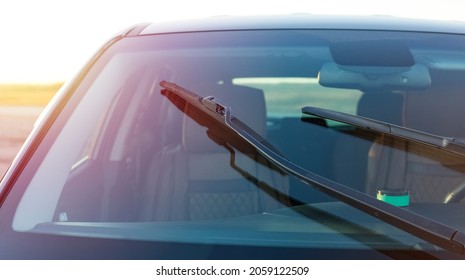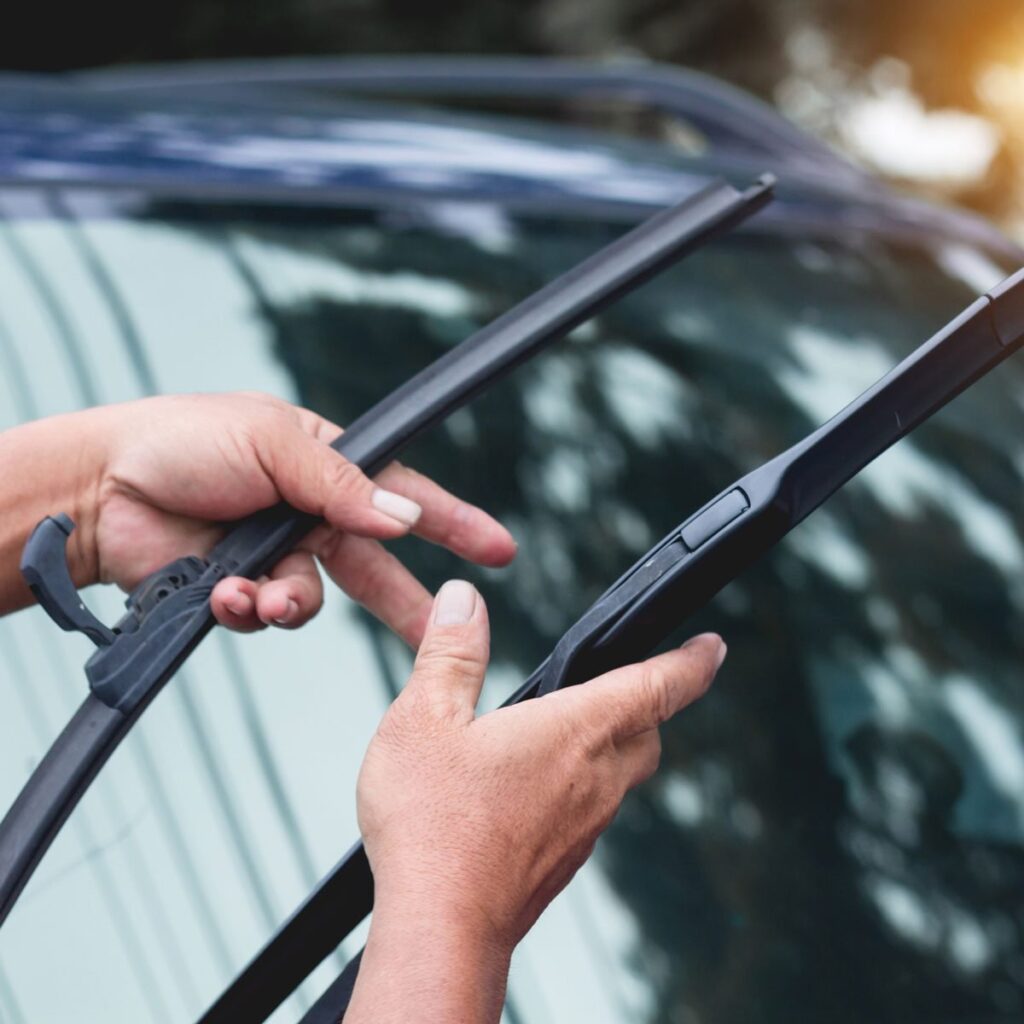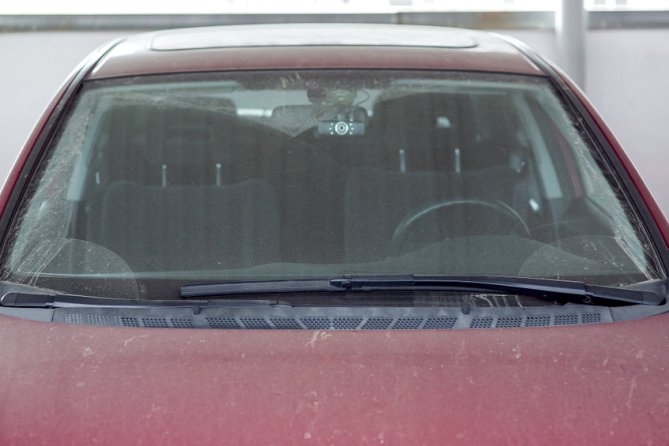
The Clear View: A Comprehensive Guide to Glass Windshields
Glass windshields, a ubiquitous feature of modern vehicles, serve as a transparent barrier between drivers and the external environment. These sheets of glass are not just a window to the world outside but also a critical safety component. In this comprehensive guide, we will delve into the world of glass windshields, exploring their history, composition, manufacturing processes, maintenance, safety features, and the latest technological advancements. So, fasten your seatbelt as we embark on this journey to uncover the fascinating world of the glass windshield.
A Brief History of Glass Windshields
Glass windshields have come a long way since their inception. Initially, early automobiles were without windshields, exposing drivers to the elements. However, as vehicles evolved, the need for protection from wind, rain, and debris became apparent.
The Early Days of the Windshield:
In the early 20th century, windshields started appearing on cars, primarily as a means to provide protection from wind and dust. These early windshields were made of plate glass, a simple, flat piece of glass that provided some protection but had significant drawbacks. When damaged, plate glass shattered into dangerous shards, posing a threat to drivers and passengers.
The Transition to Safety Glass:
The need for safer windshields became evident, leading to the adoption of safety glass. Safety glass is designed to reduce the risk of injury in the event of an accident. The two primary types of safety glass used for windshields are laminated and tempered glass.
Laminated Glass:
Laminated glass was a significant advancement in windshield technology. It consists of two layers of glass with a layer of plastic, typically polyvinyl butyral (PVB), sandwiched between them. This plastic interlayer is what keeps the glass from shattering upon impact. When laminated glass breaks, it holds together, preventing dangerous shards from flying into the vehicle.
Tempered Glass:
Tempered glass, on the other hand, is designed to shatter into small, relatively harmless pieces when broken. While tempered glass is not typically used for windshields, it is commonly employed for side and rear windows. This design choice is to ensure that, in case of an accident, the glass shatters without forming sharp, cutting edges.

The Rise of Modern Windshields:
Modern windshields are a culmination of safety and technology. Laminated glass has become the standard for windshields, offering a combination of safety and durability. In addition to safety considerations, windshields now incorporate features like UV protection, noise reduction, and even embedded technology.
The Composition of Glass Windshields
A windshield isn’t just a single sheet of glass; it’s a complex structure composed of multiple layers. Understanding the layers is crucial to appreciating the windshield’s strength and safety features.
The Layers of a Windshield:
A typical windshield is composed of three layers:
- Outer Layer: This is the outermost layer of the windshield and faces the external environment. It is made of glass and is designed to withstand impact from debris, such as rocks and other road hazards.
- Inner Layer: The inner layer is also made of glass and provides structural integrity to the windshield. It adds strength to the overall structure.
- Plastic Interlayer: Sandwiched between the outer and inner layers is a layer of plastic, often made of polyvinyl butyral (PVB). This plastic interlayer plays a vital role in ensuring the windshield’s safety. When the windshield is subjected to force, it prevents the glass from shattering into sharp pieces.
The Manufacturing Process
How are these complex sheets of glass made? The manufacturing process of glass windshields involves several intricate steps, which include heating, shaping, and tempering.
The Manufacturing Steps:
- Glass Production: The process begins with the creation of glass sheets. These sheets are typically flat and need to be shaped to fit the curvature of a vehicle’s frame.
- Shaping and Cutting: The glass is cut into the desired shape for the windshield. This shape must conform to the vehicle’s design.
- Tempering: The glass is heated to high temperatures and then rapidly cooled. This process, called tempering, enhances the glass’s strength. Tempered glass is used for side and rear windows for safety reasons.
- Lamination: For windshields, two sheets of tempered or annealed glass are sandwiched together with the plastic interlayer. This assembly is then heated and pressed to create a strong bond.
- Quality Control: The manufactured windshields go through rigorous quality control processes to ensure they meet safety and performance standards.
Windshield Types: Laminated vs. Tempered Glass
Glass windshields come in two primary types: laminated and tempered. Understanding the differences between these two types and their specific advantages is essential.
Laminated Glass:
Laminated glass, as mentioned earlier, consists of multiple layers – two layers of glass with a plastic interlayer. The key advantages of laminated glass include:
- Safety: Laminated glass is designed to remain intact even when it breaks. This prevents shards from harming vehicle occupants.
- Sound Insulation: Laminated glass provides better sound insulation, making for a quieter driving experience.
- UV Protection: The plastic interlayer in laminated glass can block harmful UV rays, protecting the occupants from sun-related skin damage and reducing interior fading.
- Security: The toughness of laminated glass makes it more difficult to shatter, enhancing security and deterring theft.
Tempered Glass:
Tempered glass is primarily used for side and rear windows. Some advantages of tempered glass are:
- Safety: When tempered glass breaks, it shatters into small, less harmful pieces, reducing the risk of injury.
- Strength: Tempered glass is stronger than standard glass, which adds to the vehicle’s overall structural integrity.
- Cost-Effectiveness: Tempered glass is often more affordable to produce, which makes it a preferred choice for side and rear windows.
- Weight Reduction: The use of tempered glass contributes to reducing the vehicle’s overall weight, improving fuel efficiency.
In most cases, laminated glass is the material of choice for windshields, given its superior safety characteristics. However, tempered glass still plays a crucial role in other areas of the vehicle.

The Importance of Windshield Maintenance
Proper maintenance is essential to ensure your windshield remains safe and in good condition. Various factors can damage windshields, including rocks, temperature changes, and environmental factors. Here are some tips for maintaining and repairing minor damages:
- Regular Cleaning: Keeping your windshield clean not only ensures good visibility but also helps you spot minor damages early.
- Prompt Repair: If you notice a chip or crack, get it repaired promptly. Small damages can be fixed before they escalate into costly windshield replacements.
- Avoid Extreme Temperature Changes: Sudden temperature changes can stress the glass and worsen existing damages. Avoid pouring hot water on an icy windshield, for example.
- Use Caution When Removing Ice: When scraping ice off your windshield, be gentle to avoid causing further damage.
- Avoid Slamming Doors: Slamming car doors can transmit shock to the windshield, potentially causing stress fractures.
- Avoid Following Large Vehicles Closely: Maintaining a safe distance from large trucks can reduce the likelihood of your windshield being hit by rocks and debris.
- Replace Worn Wipers: Worn-out windshield wipers can leave streaks or scratches on the glass, affecting visibility.
- Regular Inspection: Periodically inspect your windshield for small damages. Early detection can save you money and ensure your safety.
Remember that even minor windshield damages can compromise safety and may result in a failed vehicle inspection. When in doubt, consult a professional for a thorough evaluation.
Safety Features and Regulations
Glass windshields are not just there to protect you from the wind and rain; they play a crucial role in vehicle safety. This chapter explores the safety features incorporated into windshields and the regulations that govern windshield standards to ensure road safety.

Safety Features:
Modern windshields incorporate several safety features that enhance the overall protection of the vehicle’s occupants. Some of these features include:
- Shatter Resistance: Laminated glass, with its plastic interlayer, is designed to prevent shattering upon impact. This feature greatly reduces the risk of injury from flying glass during an accident.
- UV Protection: Many windshields have built-in UV protection, reducing the harmful effects of prolonged sun exposure. This not only protects your skin but also prevents interior fading and damage.
- Sound Insulation: Laminated glass helps reduce noise from the outside, creating a quieter and more comfortable driving experience.
- Heads-Up Displays (HUD): Some high-end vehicles have HUD systems that project important information directly onto the windshield, allowing drivers to access data without taking their eyes off the road.
- Lane Departure Warning Systems: Cameras embedded in the windshield can detect lane departure and alert the driver, enhancing road safety.
- Rain Sensors: These sensors trigger windshield wipers automatically when they detect rain, ensuring optimal visibility.
Regulations and Standards:
To ensure the safety of vehicles on the road, government agencies and standards organizations have put in place regulations and standards for windshields. Some of these regulations include:
- Federal Motor Vehicle Safety Standard (FMVSS) 205: This standard sets requirements for automotive safety glass and aims to reduce injuries resulting from impact with the windshield.
- ECE Regulation 43: Used in Europe, this regulation specifies the characteristics of safety glass, including requirements for light transmittance and the behavior of the glass when it shatters.
- ANSI/SAE Z26.1: This American National Standard sets the testing procedures and requirements for automotive safety glazing materials.
- Crash Test Standards: Windshields must meet specific crash test standards to ensure they provide adequate protection in the event of an accident.
These regulations and standards vary by region and are regularly updated to incorporate new safety technologies and materials. Compliant windshields are crucial for a vehicle’s roadworthiness and passenger safety.
Technological Advancements in Glass Windshields
As technology continues to advance, so do the features of glass windshields. From Heads-Up Displays (HUD) to smart windshields with augmented reality features, this chapter will provide an exciting glimpse into the future of windshields and how they’re becoming an integral part of the connected car experience.
Augmented Reality (AR) Windshields:
One of the most exciting advancements in windshield technology is the integration of augmented reality (AR) features. These AR windshields provide drivers with real-time information, such as navigation instructions, speed, and even alerts about nearby hazards. With AR, this information is displayed directly on the windshield, so drivers don’t have to take their eyes off the road.
Benefits of AR Windshields:
- Enhanced Navigation: AR windshields can project turn-by-turn directions onto the windshield, making it easier for drivers to follow routes without needing to glance at a separate screen.
- Safety Alerts: Important safety information, like collision warnings and speed limits, can be displayed in the driver’s field of vision, reducing distractions and improving reaction time.
- Virtual Reality (VR) Entertainment: Some concepts for AR windshields involve turning the windshield into an entertainment screen when the vehicle is in autonomous driving mode, providing a new level of in-car entertainment.
Heads-Up Displays (HUDs):
Heads-Up Displays (HUDs) have been around for some time but are continuously improving. These systems project critical information onto the windshield, allowing drivers to access data without looking away from the road. HUDs typically show speed, navigation directions, and, in some cases, even caller ID information.
Benefits of HUDs:
- Enhanced Safety: By keeping the driver’s eyes on the road, HUDs reduce distractions and improve overall safety.
- Improved Navigation: HUDs display navigation information in the driver’s line of sight, making it easier to follow directions.
- Customization: Some HUD systems allow drivers to customize what information is displayed, tailoring the experience to their preferences.
Smart Windshields:
Smart windshields take connectivity to the next level by offering features like internet access, voice control, and integration with other smart devices in the vehicle. These windshields may serve as the central hub for controlling various car functions and infotainment systems.
Benefits of Smart Windshields:
- Convenience: Accessing apps, making calls, and controlling the vehicle’s settings can be done directly through the smart windshield.
- Increased Connectivity: Smart windshields often provide internet access, keeping drivers and passengers connected while on the road.
- Voice Control: Voice-activated systems allow for hands-free control of various functions, enhancing safety.
As technology evolves, we can expect more exciting developments in windshield technology. From augmented reality to enhanced connectivity, these advancements aim to make driving safer, more convenient, and enjoyable.
Windshields in the Autonomous Vehicle Era
With autonomous vehicles on the horizon, the role of windshields is set to change. In this chapter, we’ll explore how self-driving cars are affecting windshield design and functionality, and what challenges and opportunities lie ahead for the glass industry in this new era of transportation.

The Role of Windshields in Autonomous Vehicles:
Autonomous vehicles, often referred to as self-driving cars, have unique requirements when it comes to windshields. While traditional vehicles rely on windshields primarily for visibility and protection, autonomous cars introduce new functions.
- Sensor Integration: Autonomous vehicles are equipped with a multitude of sensors, including lidar, radar, and cameras. These sensors need an unobstructed view of the surroundings, making windshield design crucial. Windshields must allow these sensors to operate effectively, which can influence their shape and materials.
- Communication Interface: In a world of connected vehicles, windshields may serve as a communication interface. For example, they could display messages to pedestrians or other drivers, enhancing the car’s ability to interact with its environment.
- Privacy and Comfort: With passengers in self-driving cars less focused on the road, windshields may serve different purposes. They could become privacy screens, providing a space for passengers to work or relax without feeling exposed.
Challenges and Opportunities:
The shift to autonomous vehicles brings both challenges and opportunities for the glass industry and windshield manufacturers.
- Design Flexibility: Windshield design may need to adapt to accommodate the unique needs of autonomous vehicles, potentially leading to more advanced shapes and materials.
- Sensor Integration: New methods of integrating sensors into windshields will be essential. This might involve special coatings that allow sensors to function optimally.
- Safety: Safety remains a top priority in autonomous vehicles, and windshields will play a critical role in ensuring the safety of passengers and pedestrians.
- Customization: Windshields in self-driving cars may offer new opportunities for customization, allowing passengers to tailor their in-car experience.
The autonomous vehicle era presents exciting challenges and opportunities for the glass industry, and the evolution of windshields will be an integral part of this transformation.
Environmental Impact and Sustainability
The production and disposal of glass windshields have environmental consequences. In this chapter, we’ll discuss the environmental impact of glass windshields and explore the efforts to make this industry more sustainable, from recycling initiatives to innovative manufacturing processes.
Environmental Impact of Glass Windshields:
The production of glass windshields involves energy-intensive processes, such as glass manufacturing, tempering, and lamination. Additionally, the disposal of old windshields can contribute to landfill waste. These factors collectively have an environmental impact:
- Energy Consumption: Glass production consumes significant amounts of energy, primarily from the melting and shaping of glass.
- Waste Generation: When windshields are replaced or damaged, they are often discarded, contributing to waste accumulation.
- Transportation Emissions: Shipping glass and windshields to manufacturing facilities and dealerships contributes to greenhouse gas emissions.
Sustainable Initiatives:
The glass industry is actively working to reduce its environmental impact:
- Recycling: Many windshield manufacturers have established recycling programs. Windshields can be recycled to create new glass products or even roads.
- Energy Efficiency: Manufacturers are implementing energy-efficient practices to reduce the carbon footprint of glass production.
- Innovative Materials: Research is ongoing into alternative materials that are more sustainable than traditional glass.
- Waste Reduction: Efforts are being made to reduce waste in the production and installation of windshields.
- Circular Economy: Some companies are exploring the concept of a circular economy, where windshields are returned, recycled, and reused within the industry.
As sustainability becomes a global concern, the glass industry is making strides to minimize its environmental impact, making glass windshields more eco-friendly.

Conclusion
In this comprehensive guide to glass windshields, we’ve explored the history, composition, manufacturing processes, maintenance, safety features, and the latest technological advancements in these critical components of modern vehicles. From their humble beginnings to their role in the autonomous vehicle era, windshields have continually evolved to provide not only visibility and protection but also advanced features like augmented reality displays and connectivity.
Safety, a top priority, is achieved through laminated glass, which prevents shattering and enhances passenger security. Windshields are subject to stringent regulations and standards, ensuring their effectiveness in safeguarding vehicle occupants.
As we look to the future, we see exciting developments in windshield technology, such as augmented reality displays and smart windshields. Autonomous vehicles bring new challenges and opportunities for the glass industry, with windshields serving as critical components for sensors and communication interfaces.
Efforts to reduce the environmental impact of glass windshields are also underway, with initiatives focused on recycling, energy efficiency, and the exploration of sustainable materials.
The glass windshield, once a simple piece of plate glass, has become a high-tech, multifunctional component at the forefront of automotive innovation. As technology and safety requirements continue to evolve, we can expect even more exciting advancements in the world of glass windshields, ensuring that our view of the road ahead remains clear and safe, with a glimpse of the future along the way.
